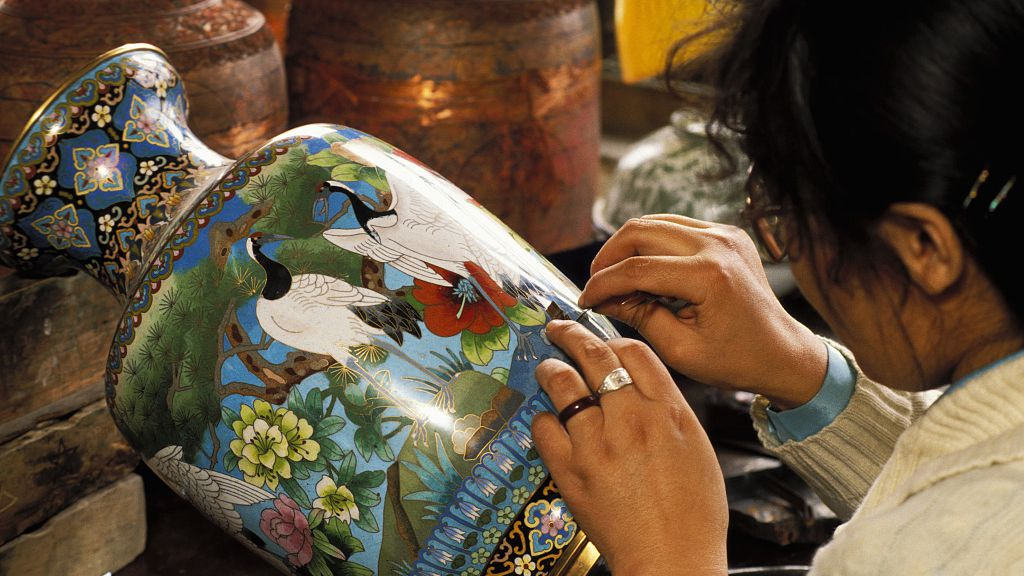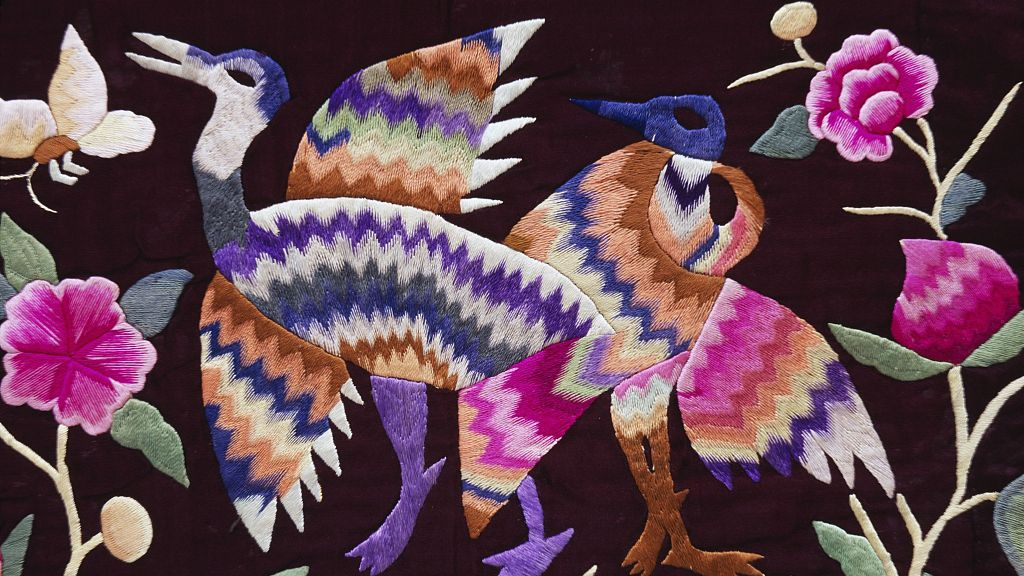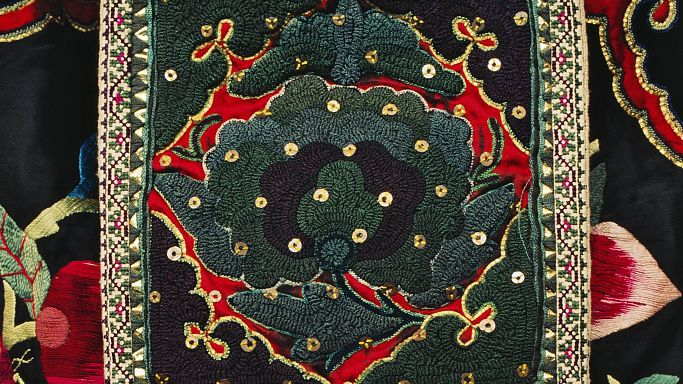There's no denying that China takes great pride in its rich cultural heritage – but some crafts are facing the threat of extinction as their guardians struggle to pass them down to a younger generation that prefers to take a different path than artisanship.
The Chinese government has been calling on young disciplines to get invested in the wealth of traditional handicrafts the country boasts by funding training programs and offering incentives that help them lead a decent life if they choose to follow the steps of dedicated craftspeople.
Here are four regional crafts listed as China's National Intangible Cultural Heritage, so you'd be able to appreciate the appeal of these places – and the men and women that make them special – in future trips there.
Oil-paper umbrella, Zhejiang Province
Oil-paper umbrella originates in Hangzhou City, east China's Zhejiang Province. The craft has a history of more than 230 years, and came as a result of constant rain in an area known for its bamboo shoots.
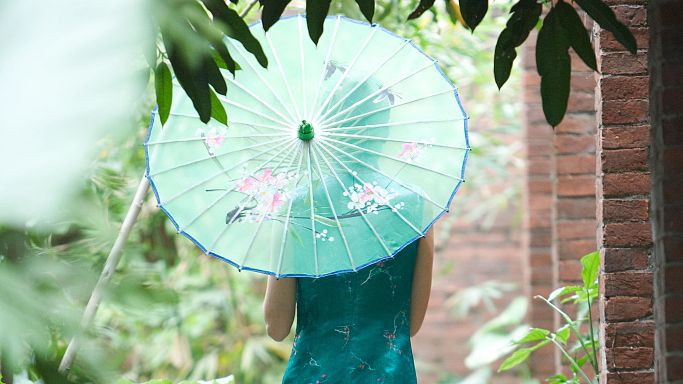
A lady sports a traditional oil-paper umbrella. /VCG Photo
A lady sports a traditional oil-paper umbrella. /VCG Photo
Nanjing-style paper cutting, Jiangsu Province
A pair of scissors, a piece of paper and a wild imagination are all that you need to create paper cuts. This folk art can be found all around China, with each region adding its own twist to it. Nanjing-style paper cutting features simple patterns of animals or natural scenery, and once you get a grip on it, it'll take you between three to five minutes to come up with a chef-d'oeuvre.
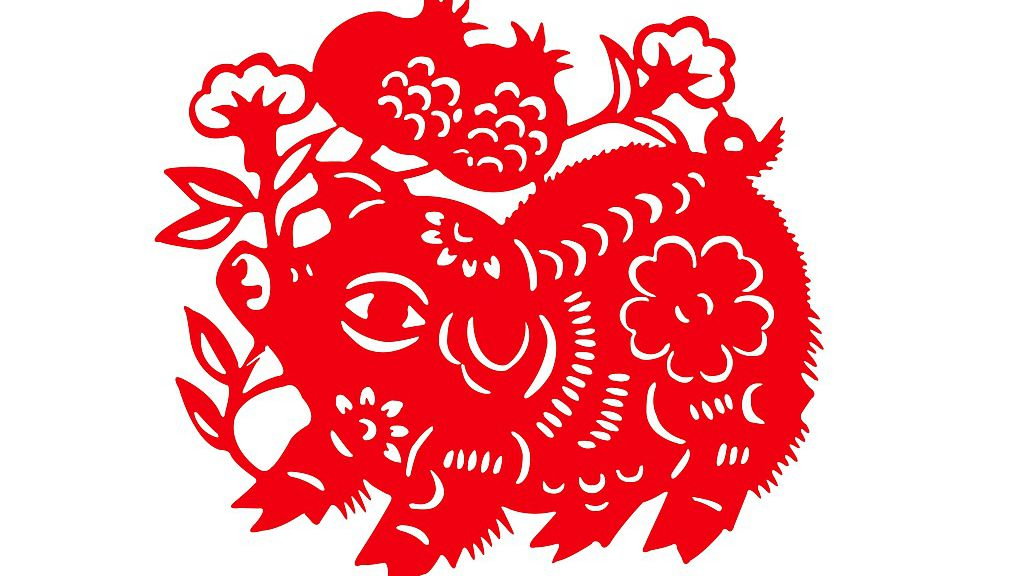
A Nanjing-style paper cut featuring a pig. /VCG Photo
A Nanjing-style paper cut featuring a pig. /VCG Photo
Jingtailan, Beijing
The art ware was introduced to China in the Yuan Dynasty (1271-1368), when Beijing was the national capital, and the craft has since found a permanent home for it in the city. The technique of making the Cloisonne matured in the Jingtai Era (1450-1457) during the Ming Dynasty, hence the name in Mandarin. "Lan" meanwhile means blue, and refers to the color mostly used as the base paint on these porcelain items.
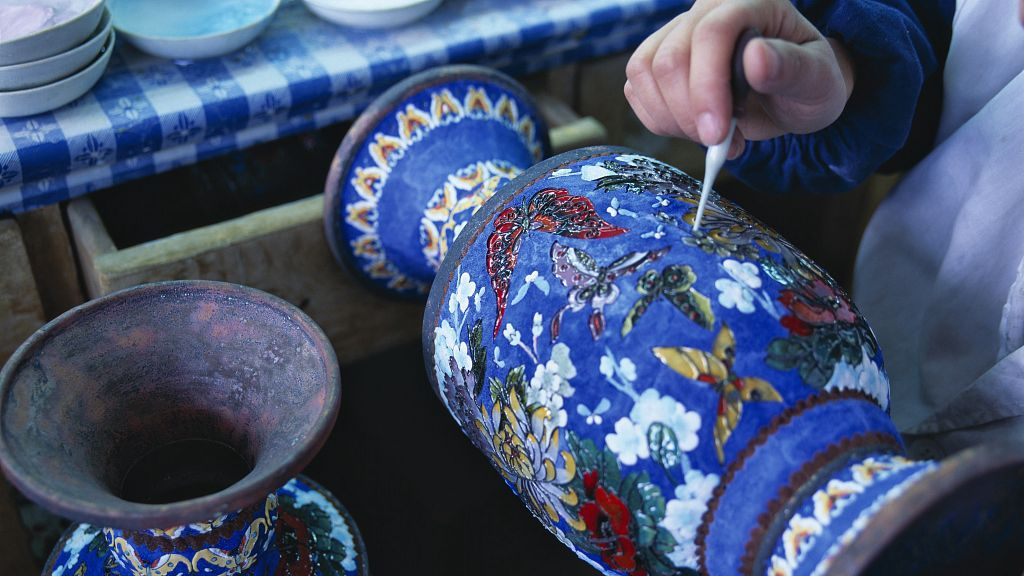
Making a jingtailan bowl. /VCG Photo
Making a jingtailan bowl. /VCG Photo

A Jingtailan bowl filled with oranges. /VCG Photo
A Jingtailan bowl filled with oranges. /VCG Photo
Miao Embroidery, Guizhou Province
The Miao ethnic group in southwest China's Guizhou Province is known for their needlework skills. They are behind some 170 types of embroideries and 18 ways of sewing techniques, some of which have been preserved from the Han Dynasty (220 – 280 A.D). The needle is their pen. In modern days, their craft is associated with the clothing market, which isn't necessarily good news as young people including those from Miao ethnic group enjoy modern clothes out of production lines.
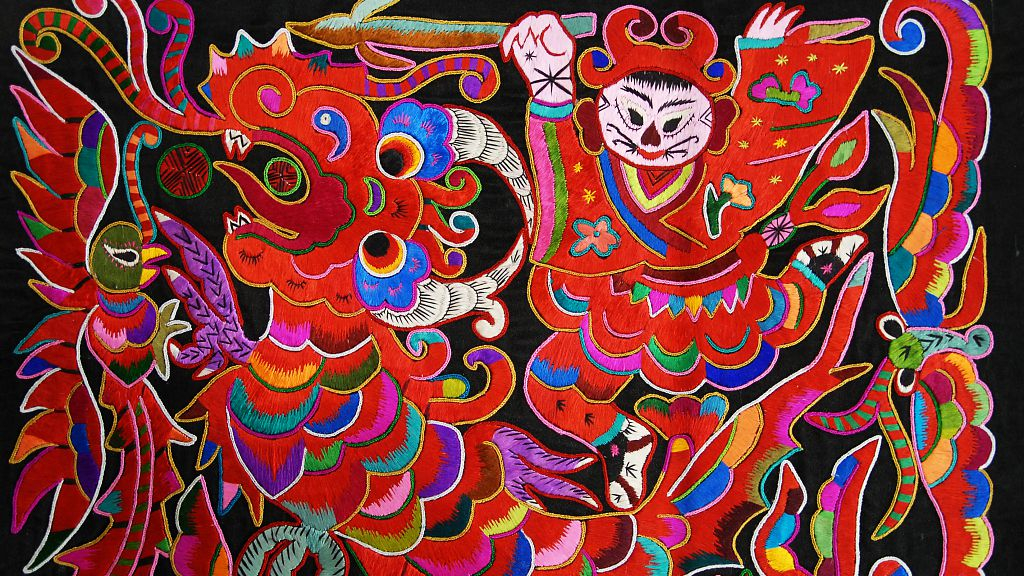
A Miao embroidery. /VCG Photo
A Miao embroidery. /VCG Photo
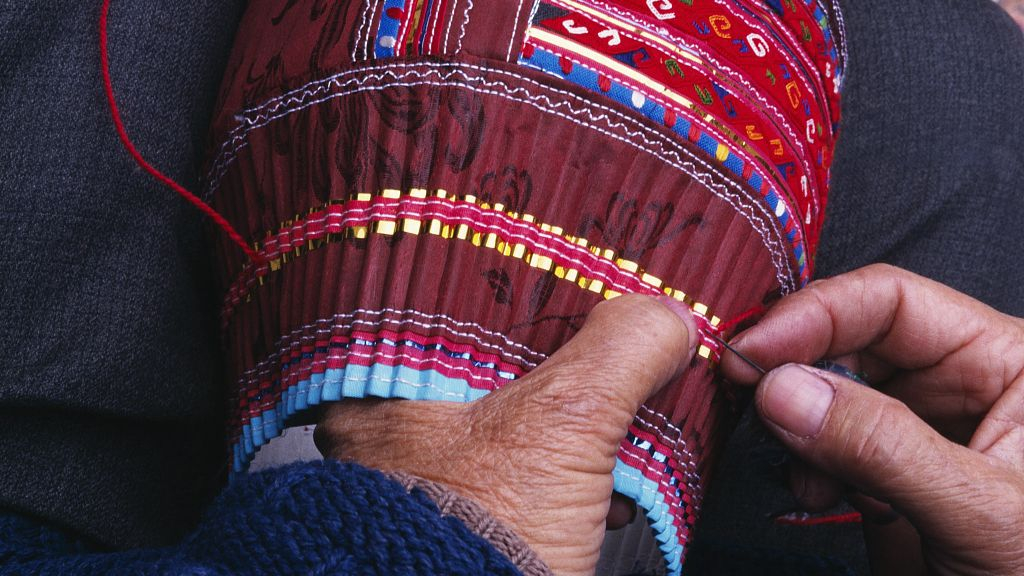
A Miao ethnic senior sewing. /VCG Photo
A Miao ethnic senior sewing. /VCG Photo
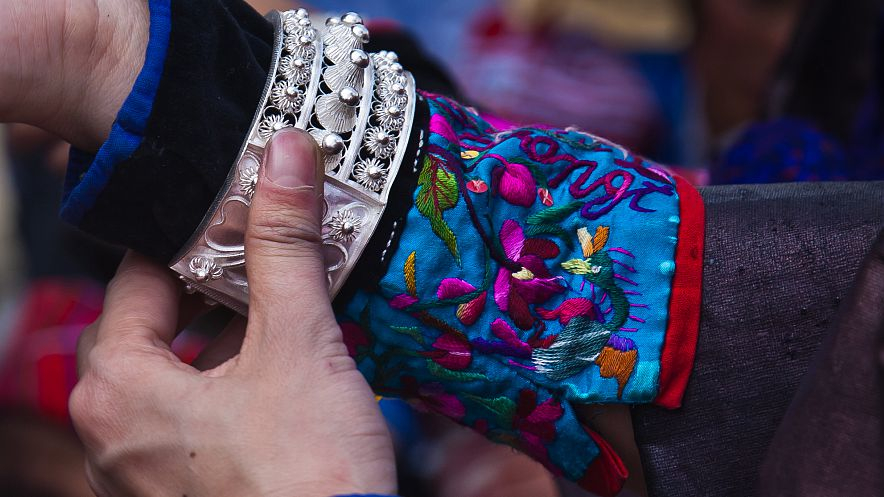
A Miao ethnic woman wearing a bracelet and her embroidery. /VCG Photo
A Miao ethnic woman wearing a bracelet and her embroidery. /VCG Photo

